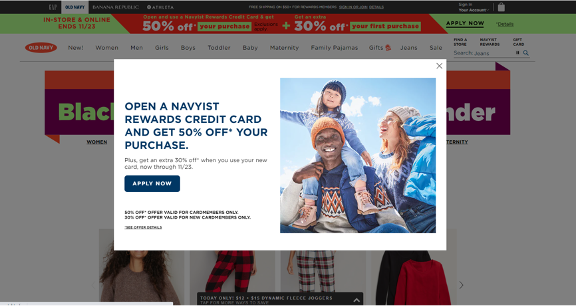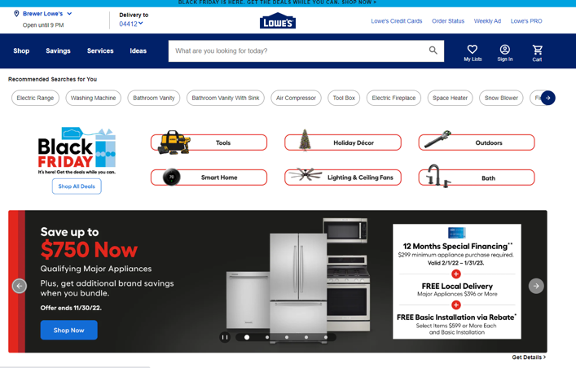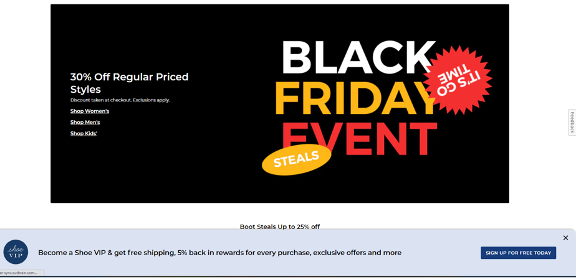Consumer promotion is a marketing strategy that increases brand awareness and entices a customer to purchase a product. These promotions are often temporary, designed to generate interest and excitement, increasing sales for a limited time - another term for them is sales promotion.
The most popular consumer promotions revolve around two fundamental ideas:
- Reward the consumer for trying or buying the product.
- Decrease risk concerns around paying for a product by offering a free trial or sample or another risk-mitigating offers.
Consumer Promotions - Rewards
There are many types of rewards you can offer in a consumer promotion that will encourage a consumer to buy a product or make a larger purchase (purchase multiples of a product), including:
- Digital coupons or rebates that offer a discount on the product.
- Special discounts for certain people such as seniors, teachers, first responders, etc.
- Giveaways and sweepstakes that a consumer is entered into when they make a purchase.
- Cashback rewards when purchasing multiple products, or BOGO (buy one get one free or for $1).
Consumer promotions decrease the price of a product (coupons and rebates) to encourage conversions, or they add additional value to the product (contest and sweepstakes) to make the regular price seem more of a deal.
Consumer Promotions - Risk Aversion
Another way a consumer promotion can increase conversions is to show first-time buyers it's safe to buy the product. A few ways to do this include:
- Try and buy offers, where you can try a product for a limited period or get a free sample to test before you buy a full-size version.
- Bundling a product with one or more additional products the consumer has purchased in the past or that go together to provide a "full package" offer.
- Free shipping or returns that help reduce the risk of buying something new. If they don't like it, they can easily return it.
Many people are wary of trying new products, but consumer promotions can relieve some of that anxiety and risk aversion.
The Benefits of Consumer Promotions
The benefits of a consumer promotion marketing strategy are similar to other marketing strategies. First, it builds brand awareness, something every brand needs to do, especially in highly competitive consumer markets.
This strategy can also build customer loyalty; a brand can create a consumer promotion that provides special rewards and deals for existing customers in a loyalty program.
Consumer promotions (also called sales prmootions) can be used to launch new products or boost sales of existing products (see also these sales promotion examples).
This strategy can also be used to get a feel for how price-sensitive consumers might be for a particular product. Marketing can test different coupon or rebate offers to understand the best price point that will encourage the most product sales.
Types of Consumer Promotions
Consumer promotions are marketing tactics aimed at stimulating consumer demand for a product or service. These promotions often offer incentives or benefits to consumers to encourage purchases. Here are some common types of consumer promotions:
Contests: Contests are promotional events where consumers compete for prizes by demonstrating a particular skill or fulfilling specific criteria. Contests can generate excitement and engagement among consumers, as well as generate user-generated content for marketing purposes.
Sweepstakes: Sweepstakes are random prize draws where consumers enter by submitting their contact information or completing a simple task, such as filling out a form or following a social media account. Unlike contests, sweepstakes winners are chosen by chance, and no skill or purchase is required to enter.
Loyalty Programs: Loyalty programs reward customers for repeat purchases or other desired behaviors, such as referrals or social media engagement. Customers typically earn points, discounts, or exclusive benefits that incentivize them to remain loyal to a brand or retailer.
Gifts with Purchase (GWP Marketing): Gifts with purchase promotions offer consumers a free item or gift when they buy a specified product or spend a certain amount of money. The free gift can be related to the purchased product or a different item altogether. Gifts with purchase promotions can increase average transaction value and encourage impulse buying.
Coupons: Coupons are vouchers that offer discounts or rebates on specified products or services when presented at the point of purchase. They can be distributed through various channels, including newspapers, magazines, direct mail, email, mobile apps, and websites.
Discounts: Discounts reduce the price of a product or service for a limited time. They can take various forms, such as percentage discounts, dollar amount reductions, or buy-one-get-one-free (BOGO) offers. Discount promotions are effective in attracting price-sensitive consumers and driving sales volume.
Rebates: Rebates are refunds offered to consumers after they purchase a product. Consumers typically need to submit proof of purchase, such as receipts or UPC codes, to claim the rebate. Rebates provide a partial reimbursement of the purchase price and can encourage consumers to try a product or make repeat purchases.
Sampling: Sampling involves offering free samples of a product to consumers to try before making a purchase decision. Sampling promotions are commonly used for new product launches or to introduce existing products to new markets. Sampling helps create product awareness, trial, and word-of-mouth recommendations.
Bundle Deals: Bundle deals combine multiple products or services into a single package offered at a discounted price compared to purchasing each item separately. Bundle promotions can increase perceived value, encourage upselling, and help clear excess inventory.
Limited-Time Offers: Limited-time offers create a sense of urgency by promoting discounts, special deals, or exclusive products for a limited duration. These promotions capitalize on consumers' fear of missing out (FOMO) and prompt them to make immediate purchasing decisions.
Each type of consumer promotion has its advantages and is suitable for different marketing objectives, target audiences, and product categories. Effective promotion strategies often involve a combination of these tactics tailored to specific business goals and consumer preferences.
Examples of Consumer Promotions
See actual examples of Sweeps, Contests, Promos and Rebates here: Consumer Sales Promotions Case Studies
Here are some examples of promotions below as well.
Old Navy
Old Navy offers a one-time discount on a purchase if a person opens a Navist Rewards Credit Card.

Lowes
Lowes offers special pricing when you bundle several appliances together.

The Shoe Company
The Shoe Company's loyalty program provides members with free shipping and 5% reward points for every purchase. 
Request a demo to discuss how you can enhance your consumer promotions program with Snipp.


